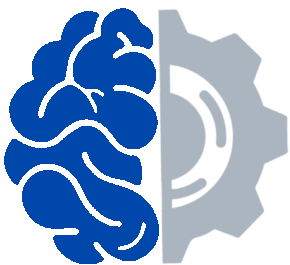Why Human Factors?
As a human factors student, I usually encounter blank confusion when casually discussing work. In many technical disciplines it’s common to need an education to even begin to understand the basic ideas behind a field. This is why many engineering students, myself included, change majors. It’s difficult to tell if your interest in plasma should be directed to the physics department or mechanical engineering.
Simply: human factors (or ergonomics), is the design of things to fit people, physically and mentally. Most confusion over this occurs due to the lack of awareness. Engineers regularly design things but rarely do people consider that someone will have to use said thing. If you’ve ever wondered why something was so feature rich and still horribly unusable (usually about the point where said item is being defenestrated), we’re here to help.
A common misconception of our field is that we design office furniture. Admit it, you immediately thought of the ‘ergonomic’ buzzword you see splashed across every highly marketed item. While ergonomists certainly do help design these things, it’s far more common for their work to never truly be noticed. The better a design is, the less you think of it.
Engineers
The problem comes down to this: engineers are fantastic as solving themselves into problems.
Engineering focuses on math, science, and problem solving. It’s important to understand that engineers tend to see the world as a collection of problems; it’s simply not enough to observe, you must solve.
What’s especially telling is that engineers frequently live in the world of the uncertain. Their duty is to discover new methods and create new things; they can never rightly be sure if these goals can actually exist. Every time they succeed is a surprise.
The problem comes from this: people are remarkably resourceful when they need to be and if the common user could have solved their problem, they would have. Engineers are fundamentally different from those they are serving and have great difficulty understanding both the context and the perspective of use because of the very things that make them successful.
The designer is not the user.
Use and AbusE
Those who are familiar with children are aware of just how astoundingly creative they can be. Toys with defined functions quickly become something else and things that are certainly not toys quickly become them (i.e. ceiling fan baseball). They have an innate awareness that the purpose of an item can actually be quite subject to change.
This kind of creativity, however, isn’t only present in children. Adults can use objects in truly terrifying combinations. For a good(?) example, I recommend There, I Fixed It!, a blog full of various improvised uses, or kludges. What’s astounding is the sheer variety of fixes that are found. Dust pans become funnels, skateboards double as spare tires, and ladders allow the whole thing to occur at a much higher level than should ever be attempted. The end results run the range from fantastic to tragic.
When designing for users, however, kludges will give you night terrors. The “correct”, intended use is difficult to communicate and becomes more difficult the more dangerous the device is (i.e: there is no safe chainsaw). Users may believe that they are using something reasonably, but what is most astounding is their gleeful abuse and the corresponding difficulty of trying to prevent it from occurring. What is clearly insanity from the designer perspective may only seem clever to users. Even small, repetitive motions can be surprisingly harmful if repeated for several decades (i.e: carpal tunnel syndrome).
Obviousness
So, why don’t we just ask the end user what they’re going to do? Focus groups and surveys are incredibly popular, and for good reason.The problem is, however, that what you say you do and want may actually be quite different from reality.
The most important daily actions often escape our notice. You didn’t have to think about how to dress yourself this morning, you can read your watch (or phone) without any actual effort, and you likely aren’t sounding out the syllables to this sentence under your breath. If you want an excellent demonstration of this effect (known as transparency), the next time you’re driving with a friend, try to explain every action as you do it. Be sure to do this on a very clear street because you might be surprised at just how difficult such a regular task becomes when you try to analyze it. Those who have attempted to teach someone else to drive may remember how frustrating and terrifying the entire experience can be.
Likewise, when designing, the most basic actions must be taken into account. Writing an explicit guide for something as simple as changing a tire becomes a twenty step process after you account for opening of the trunk, accounting for all the parts, and making sure things are in the right place. Try it if you disagree.
The Solution
Human factors is an attempt to address these shortcomings. Because people are an inextricable part of any large-scale system we must become their observers and students.
Ergonomists serve as a intermediary between end-user and engineer and must equally understand both parties’ strengths and short-comings and be able to communicate and understand even the most seemingly trivial details about the world around them.

